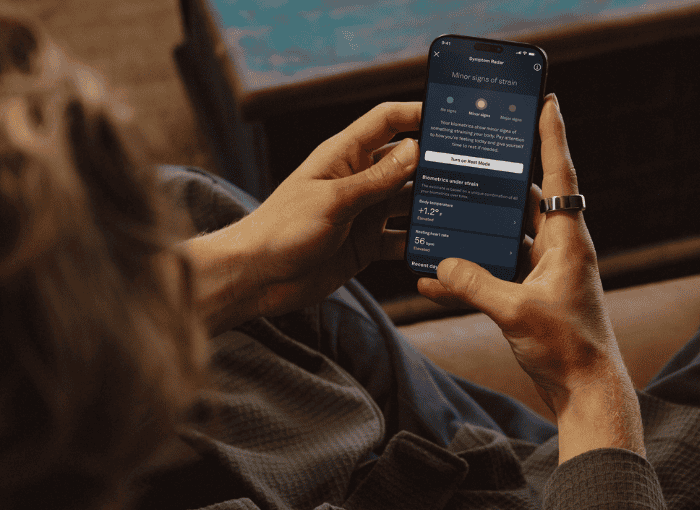Oura has announced the release of a new feature, Symptom Radar, for its Oura Ring Gen3 and Gen4 models, available to members starting December 5, 2024. This feature aims to identify early signs of physical strain, allowing users to take preventive steps towards rest and recovery.
The development of Symptom Radar began in 2020 with the TemPredict study conducted by the University of California, San Francisco. This research laid the foundation for the Health Risk Management platform, initially introduced for select enterprise clients to support workforce safety. Over the years, Oura’s Science and Data Science teams have worked to refine the algorithm to make it more responsive and accurate. By 2022, studies showed that the Oura Ring could detect signals associated with the onset of COVID-19 approximately 2.75 days before diagnostic testing.
The Symptom Radar feature was first introduced in April 2024 within Oura Labs for testing, where members could opt-in and provide feedback to the developers. Based on this feedback, the final version was prepared and made available to all Oura Ring members in December 2024. Symptom Radar examines changes in user data that might suggest physical strain. It monitors over 40 biometrics, including skin temperature, average temperature trends, respiratory rate, resting heart rate, heart rate variability, and inactivity levels, along with demographic factors such as age. Deviations in these metrics over time can suggest a need for rest to support immune system responses and recovery.
The Oura App categorizes signs of strain into three levels: no signs, minor signs, and major signs, based on biometric data. If minor or major signs of strain are detected, the app highlights the biometrics from the previous night that deviate from the baseline. Even if the biometrics remain within their normal range, Symptom Radar can identify subtle signs of strain. Users have the option to enable Rest Mode, which pauses all activity-related metrics to focus on rest instead of physical goals like step count or caloric burn. Symptom Radar continues to monitor biometrics even when Rest Mode is activated.
For Oura members with an active membership, Symptom Radar is turned on by default. It uses data from at least seven nights of sleep over the past 14 days to detect any signs of strain. If signs are detected, they appear on the Today screen of the Oura App the following morning, where users can tap the Symptom Radar card for more details. The feature can be accessed at any time from the app’s menu, and users can choose to toggle it on or off as needed.
For further details and information on Symptom Radar, check out the Oura Ring site here.




